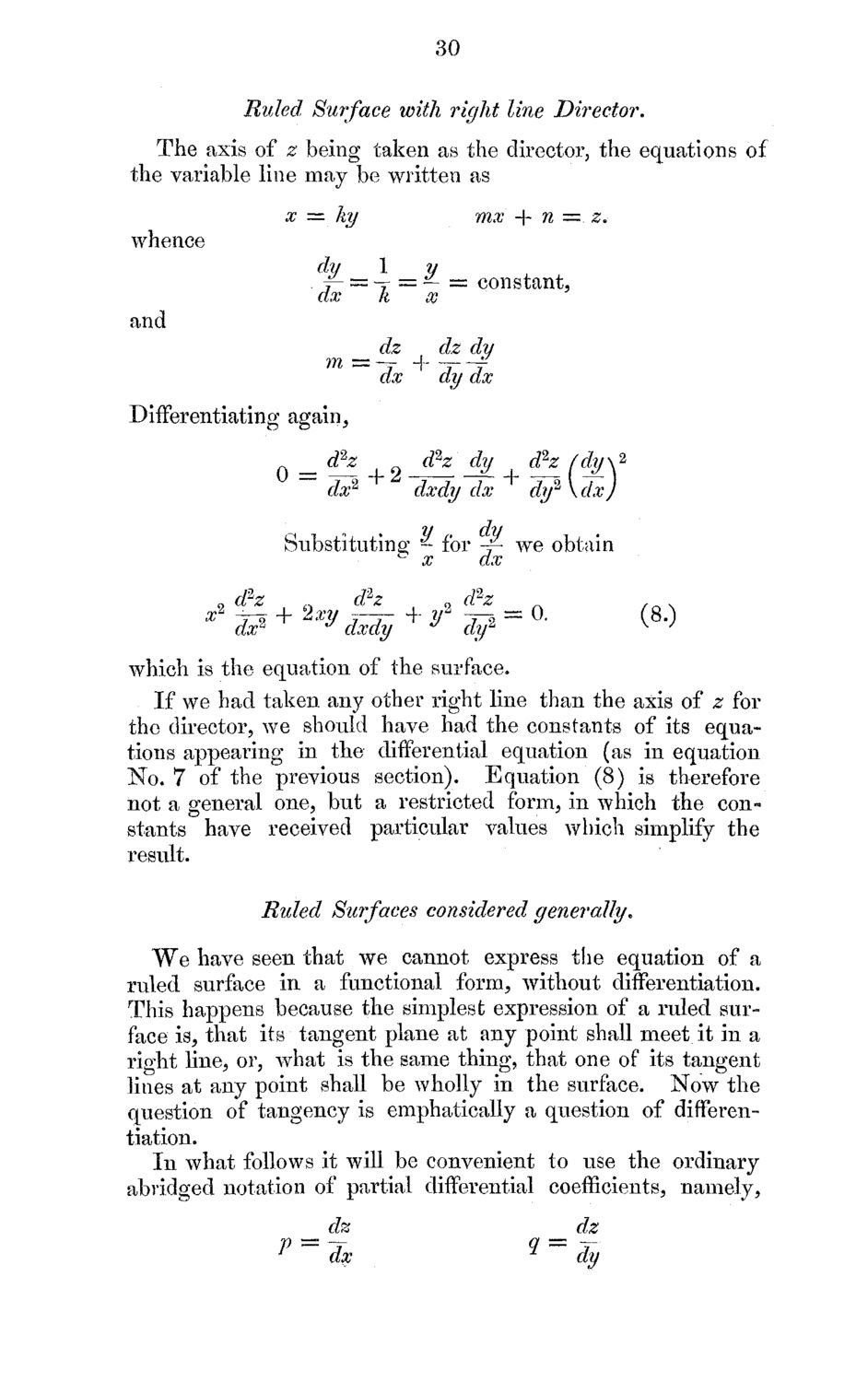| |
| |
Caption: Mathematical Models Catalog of a Collection of Models of Ruled Surfaces
This is a reduced-resolution page image for fast online browsing.

EXTRACTED TEXT FROM PAGE:
30 Ruled Surface with right line Director. The axis of z being taken as the director, the equations of the variable line m a y be written as x — ky whence dJL = l =- ¥~ = cons5tant dx k C O and dz 771 = ~~ dx Different]iatin^y again, d2z dz dy dy dx m x -f n —.*, d2z dy dxdy dx d2z dy2 m . Substituting y for < k we obtain x ax cPz d2z o d2z X2 dx2 —: 0. 11* dxdy 4- v2 f J dy2 (8.) which is the equation of the surface. If w e bad taken any other right line than the axis of z for the director, w e should have had the constants of its equations appearing in the differential equation (as in equation N o . 7 of the previous section). Equation (8) is therefore not a general one, but a restricted form, in which the constants have received particular values which simplify the result. Ruled Swfaces considered generally. We have seen that we cannot express the equation of a ruled surface in a functional form, without differentiation. This happens because the simplest expression of a ruled surface is, that its tangent plane at any point shall meet it in a right line, or, what is the same thing, that one of its tangent lines at any point shall be wholly in the surface. N o w the question of tangency is emphatically a question of differentiation. In what follows it will be convenient to use the ordinary abridged notation of partial differential coefficients, namely, dz dz
| |